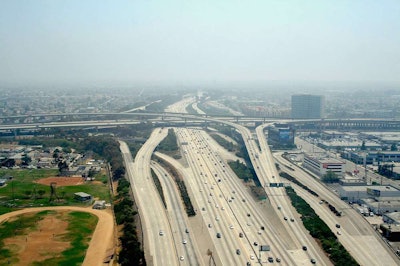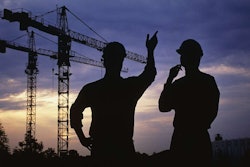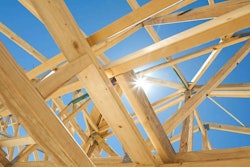
The way it’s ‘sposed to work, except our travel department wouldn’t spring for the 2015 red Corvette convertible in the rental lot. Got a minivan instead. Sigh.
The Los Angeles freeway system is a testament to the foresight of an older generation of state government and civic leaders. Fifty years ago they realized that a massive, long-term investment in infrastructure would be needed to realize their dreams. So they built it and a great city.
Of course for my January visit I got lucky and hit it just right. There are only a few hours a day when the traffic flows as smoothly as it did for me. Southern California is at a tipping point when it comes to traffic. There is nowhere to put new roads—mountains to the north and east, Mexico to the south and the Pacific to the west.
So what is California to do now that the physical limits of the greater South Coast area have been reached? How does it sustain growth, attract new industry, bring in new jobs and people—the lifeblood of any city or region? How does LA keep itself from choking on its own traffic, of devolving into Tijuana del Norte?
The only possible solution I see is a European style public transportation system—a widespread grid of commuter rail interspersed with bus routes. They’ll need elevated rail, to avoid the cost of subway tunneling. Honolulu is already doing this and they have worse traffic than LA.
When it’s not done piecemeal, this works quite well. Rail+bus is the norm in all the big cities of Europe and as a result, you’re never more than about three walkable blocks from public transportation. I lived in Berlin for three years. Didn’t have a car, didn’t need one. If LA did this and put free Wi-Fi on their busses and trains it would be a hit.
Los Angeles has as much cultural significance as any European capital, yet without a better way of moving people around, the city is screwed. Its future economic growth, desirability and vitality will decline. That, actually, has already started to happen for many reasons, but transportation difficulties are certainly a contributing factor.
Fifty years ago the citizens and leaders of Southern California had the vision and determination to do something great. Their freeway system transformed this hodgepodge of orange groves, movie studios and suburbs into one of the most important cities in the world. Fifty years from now, Los Angeles will be more like New Delhi if they don’t start taking their transportation needs seriously.












